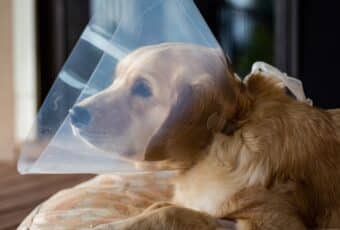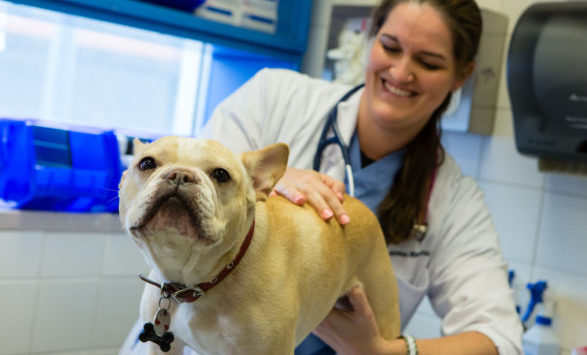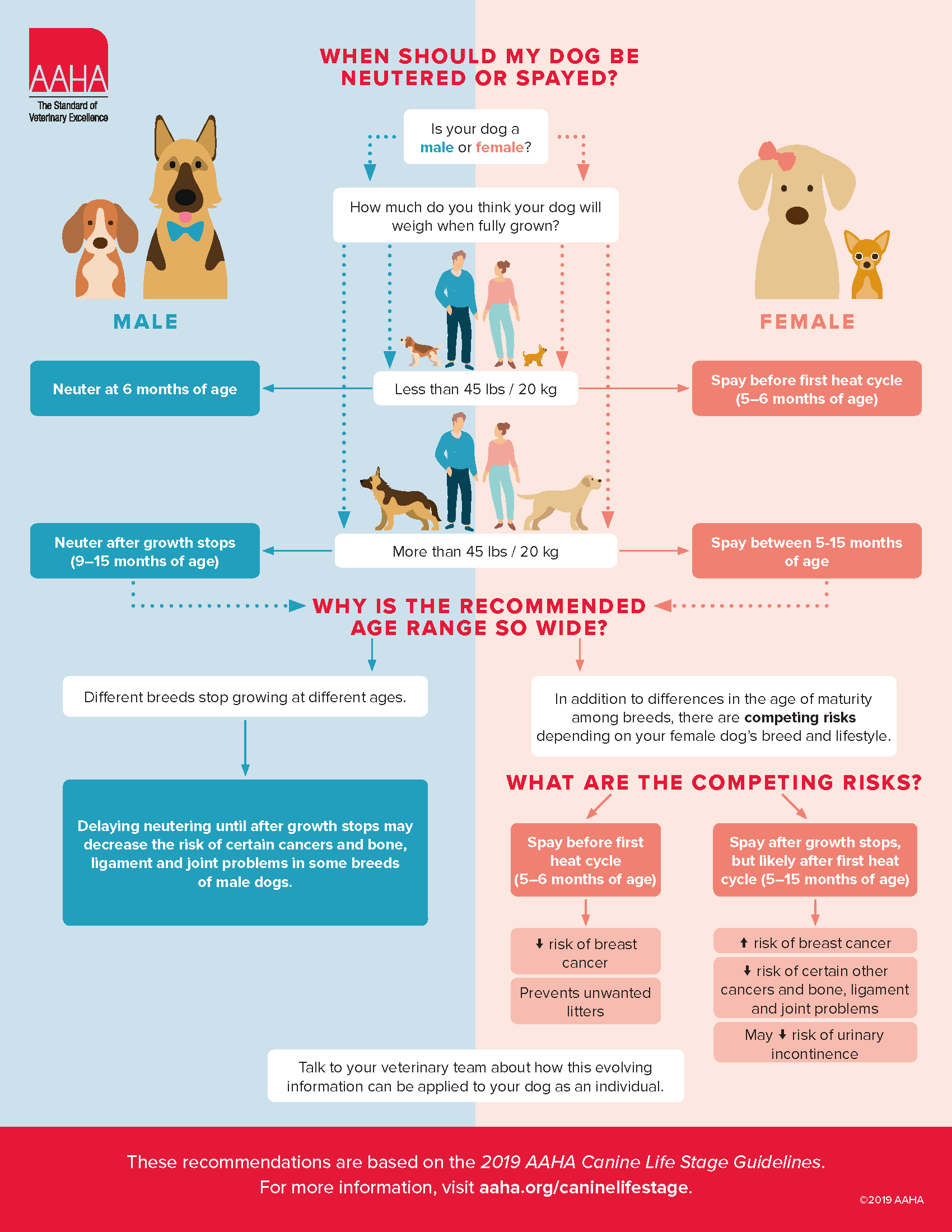Spaying & Neutering in Dogs

Brief Introduction
Spaying and neutering are sterilization procedures which prevent a pet’s ability to reproduce. “Spay” is the colloquial term for the surgical removal of female reproductive organs and “neuter” is the colloquial term for the removal of male reproductive organs.
Puppies are most commonly spayed or neutered as a routine measure to prevent future pregnancies and the development of certain diseases. Spaying and neutering help to save approximately 4 million pet lives each year (the number of unwanted dogs and cats euthanized in animal shelters across the US). Spaying and neutering are highly recommended unless your dog is to be used for breeding.
Sometimes, spaying or neutering is a treatment for certain diseases and conditions. For example, unspayed females can develop a life-threatening uterine infection called pyometra that requires emergency surgery to remove the uterus. Males with testicular diseases or injuries, such as testicular torsion or testicular cancer, may also require the removal of their testicles for treatment. An enlarged prostate or a prostatic infection are treated by neutering as well.
Types of Procedures
Your veterinarian may recommend one of several different procedures to spay/neuter your dog.
Most common surgical procedures:
- Ovariohysterectomy – the surgical removal of the ovaries, uterine horns, and uterus from a female, otherwise known as “spay”. Not only does this procedure prevent pregnancy, but it eliminates a dog’s heat cycle as well due to the removal of the ovaries, which produce female hormones. For this procedure, an incision is made through either the abdomen or flank to remove the female reproductive organs.
- Orchiectomy – the surgical removal of the testicles from a male, otherwise known as “neuter”. This procedure prevents a dog’s ability to father litters and prevents common male breeding behaviors by removing the major source of the male hormone called testosterone. For this procedure, a small skin incision is made near the testicles through which the testicles are removed.
Alternative surgical procedures:
- Ovariectomy – the surgical removal of the ovaries only. This procedure, similar to an ovariohysterectomy, prevents pregnancy and eliminates a female’s heat cycle. Ovariectomies are becoming more commonplace as it is a laparoscopic surgery, meaning it is minimally invasive. Instead of making a large incision, a small, high-resolution camera and surgical instruments are inserted through one or two small incisions in the abdomen to perform the surgery.
- Hysterectomy – the surgical removal of the uterus and part of the uterine horns. This procedure, while it prevents pregnancy, does not prevent breeding behaviors as the ovaries (which produce female hormones) remain in the body.
- Vasectomy – the surgical removal of the vas deferens (tubes which transport sperm from the testicles). This procedure, while it prevents a male’s ability to reproduce, does not prevent breeding behaviors as the testicles (which produce testosterone) remain in the body.
Before and After Spaying/Neutering
As with any surgery that requires anesthesia, your veterinarian will be sure to complete a physical examination and perform necessary bloodwork to make sure your pet is in good health before scheduling the procedure. If your pet is being spayed/neutered due to a medical condition (such as pyometra or testicular disease), additional testing such as abdominal x-rays and ultrasounds may be required.
Following surgery, your veterinarian will provide instructions for aftercare which may include the following:
- Administer pain medication for several days following surgery
- Avoid bathing your pet for at least 10 to 14 days after their surgery
- Prevent your pet from licking the surgical site by using an Elizabethan collar (e-collar)
- Prevent your pet from running, jumping, using the stairs, or roughhousing for up to 2 weeks following surgery
- Provide a quiet place for your pet to recover separate from other animals in the home
Your veterinarian may provide additional aftercare instructions if your pet was spayed/neutered due to an underlying medical condition. The sutures will typically need to be removed 10 to 14 days after surgery.
Throughout recovery, be sure to check the surgical site daily for any redness, swelling, or discharge. Should you notice any of these changes, or if the incision site is open, contact your veterinarian right away as this could be a sign of an infection. In addition, be on the lookout for any other signs of illness in your pet, such as lethargy, decreased appetite, vomiting, or diarrhea. Contact your veterinarian right away if you notice any of these signs or have additional concerns.
Benefits to Spaying/Neutering
There are an enormous number of benefits to spaying/neutering your pet.
Health Benefits:
- Spayed females avoid the risk of developing different types of cancer, including breast cancer, uterine cancer, and ovarian cancer. Spayed females cannot develop pyometra, a life-threatening bacterial infection of the uterus. In fact, about 25% of unspayed dogs develop pyometra before the age of 10, which must be treated with emergency surgery.
- Neutered males avoid the risk of developing testicular cancer and prostate disease.
- Spaying/neutering prevents unwanted litters of puppies. Some females can experience pregnancy complications, including dystocia (abnormal or difficult birth).
Behavioral Benefits:
- Spaying prevents heat cycles (estrus) from occurring in female pets. Dogs in heat can leak bloody vaginal discharge and may also attract unwanted male “suitors” around the home.
- Neutered males are less likely to roam. Intact dogs will try to find a mate by leaving their home, putting them at risk for injuries from a car accident or fight with another male.
- Neutered males are also less likely to spray urine around the home in order to mark their territory.
- Neutering males can decrease aggressive behavior. This is helpful in preventing dog bite injuries in humans.
- Neutered dogs are less likely to mount other dogs, people, and objects.
Financial Benefits:
- Spaying/neutering are cost-effective procedures. There are many low-cost/no-cost options, and many animal shelters choose to spay/neuter puppies before adoption.
- The cost of emergency surgery in cases of pyometra, the cost of caring for an unwanted litter, or even the cost of the cleaning products used after an intact male sprays urine in the home exceed the cost of spaying/neutering your pet.
Animal Welfare Benefits:
- Up to 4 million unwanted dogs and cats are euthanized in the United States each year. By spaying/neutering your pet, you are protecting against unwanted litters and saving lives that would otherwise enter animal shelters with no guarantee of adoption.
Risk Factors
As with any surgical procedure, there are anesthetic and surgical risk factors to consider. However, the overall incidence of complications from routine spays/neuters are very low.
While spaying/neutering prevents many issues, early sterilization may be linked to an increased risk of urinary incontinence in females, and orthopedic disease and certain cancers depending on the size or breed of your dog.
When Should You Spay/Neuter?
The traditional recommendation is to spay a female dog at 6 months of age, or before their first heat cycle and a male dog about the same time. These recommendations are currently being reevaluated and some veterinarians suggest different considerations should be made for small and large breed dogs and for some purebred dogs as well. As always, talk with your veterinarian who will help you weigh the risks and benefits for when to spay/neuter your pet. Please refer to the following chart by the American Animal Hospital Association for more information.
Additional Resources
For more information on spaying/neutering in dogs, check out this clip from our lecture on Medical Myths about Dogs:
Make an Appointment

Primary Care
AMC’s Primary Care Service aims to provide the highest quality primary veterinary care and to educate our clients about the latest in healthcare and preventative medicine, so they can make informed medical decisions for their pets, enabling their companions to live longer, happier, and healthier lives.
Learn More






























